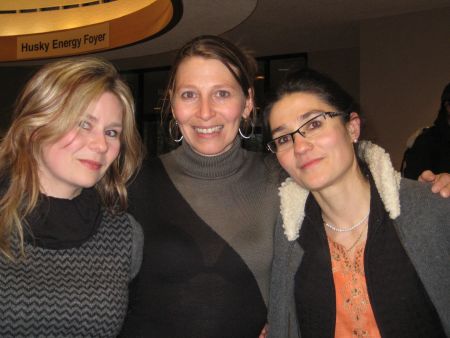

Summary by: Natasha Blanchet-Cohen, Elaina Mack and Michele Cook
Young people are major stakeholders in society. They have ideas, strengths and vitality that come from their diverse experiences. Given a chance, young people can contribute to improving their own well-being and that of their communities.
The guidebook Changing the Landscape: Involving Youth in Social Change aims to promote youth engagement, especially among youth who have traditionally been marginalized. The guidebook shares knowledge, tips, and strategies gleaned from a four-year Canadian initiative entitled YouthScape: community based. youth paced. In Youthscape, five communities across Canada succeeded in creating dynamic spaces in which young people initiated local projects and learned more about how their community works. In each community, unlikely allies forged new relationships that have led to durable changes in behavior, policy and perception.
Based on the collective experiences in Youthscape, this guidebook offers insights and tools that can help to bring youth engagement to life in organizations and communities. It provides case studies, stories, activities, real life lessons, and practical recommendations. Whether you are experienced in youth engagement or are just beginning to think about how to involve young people, this guidebook will help you design or refine your practice.
The guidebook is available in English and in French. The English version can be found at: http://www.mcconnellfoundation.ca/en/resources/report/youthscape-guidebook-changing-the-landscape-involving-youth-in-s. The French version is available at: http://www.mcconnellfoundation.ca/fr/resources/report/youthscape-guidebook-changing-the-landscape-involving-youth-in-s.
The guidebook is organized into chapters that describe five key steps for changing the community landscape for youth engagement.
Step 1 is to understand the value of youth engagement. This chapter presents the multiple benefits of youth engagement, benefits which are especially powerful for marginalized young people. The chapter highlights the value of identifying and creating supportive laws, policies and strategies that recognize youth as agents of change.
Step 2 involves preparing a strong foundation. The chapter explains the importance of preparing an environment that supports youth engagement. It describes innovative ways to assess organizational readiness, develop strong planning processes, and establish effective management structures.
Step 3 addresses taking effective action. This chapter outlines five concrete strategies for engaging youth, and the benefits and challenges associated with each. The chapter also provides details about how best to implement these strategies, as well as a checklist for success. The five strategies are:
Step 4 involves nurturing important relationships. Supporting the meaningful collaboration between youth and adults is as much about process as it is about results, especially when working with vulnerable populations. Infusing young people’s perspectives into social change initiatives involves more than creating opportunities; it requires creating practices that allow youth and adults to discover new ways of working together. This chapter shows how to support and sustain youth engagement, and presents key practices that can help youth and adults work together, build trust, and nurture allies.
Step 5 relates to measuring impact. The chapter presents key strategies and indicators for documenting young people’s involvement in meaningful social change, including reflection, tools for tracking change, and leveraging and sustaining impact.
This guidebook promotes concrete strategies for embarking on a journey of creating social change WITH young people. Commitment, knowledge, skills and self-awareness are critical to navigating the many challenges of the youth-engagement and the social change journey. While no two journeys will be alike, the practical tips and lessons contained in the guidebook will help in the process of creating more resilient and inclusive communities by engaging young people.
"If we want to continue with Youth Engagement and for there to be more ripples in our community, we need to have those adult support people building their skills and becoming better in Youth Engagement."
- Halifax adult
 Natasha Blanchet-Cohen, Elaina Mack, Michele Cook
Natasha Blanchet-Cohen, Elaina Mack, Michele Cook
About the guidebook authors:
Natasha Blanchet-Cohen is Assistant professor at Concordia University and an International Child Rights and Development (IICRD) Associate where she led research on youth engagement for over a decade.
Elaina Mack is project manager at IICRD with 10 years of communication and policy experience.
Michele Cook has over 15 years of experience as IICRD program and curriculum director.
About Youthscape: YouthScape brought together the J.W. McConnell Family Foundation (JWM), the United Way of Calgary and Area, the International Institute for Child Rights and Development (IICRD) and several communities across Canada, including Halifax Regional Municipality, Rivière des Prairies, Thunder Bay, Hamilton, Saskatoon, Calgary and Victoria, to create stronger more resilient communities by involving youth
agregar comentario
![]() Descargue la versión en PDF para acceder al artículo completo, incluyendo tablas y figuras.
Descargue la versión en PDF para acceder al artículo completo, incluyendo tablas y figuras.
palabras clave: gjcpp, youth engagement, social change, community psychology practice